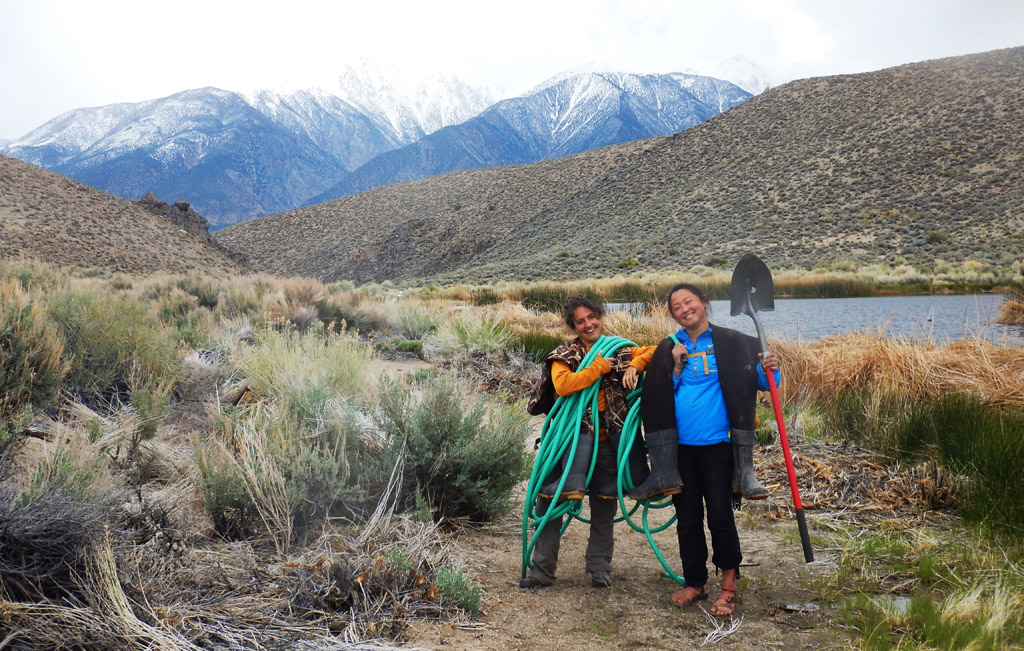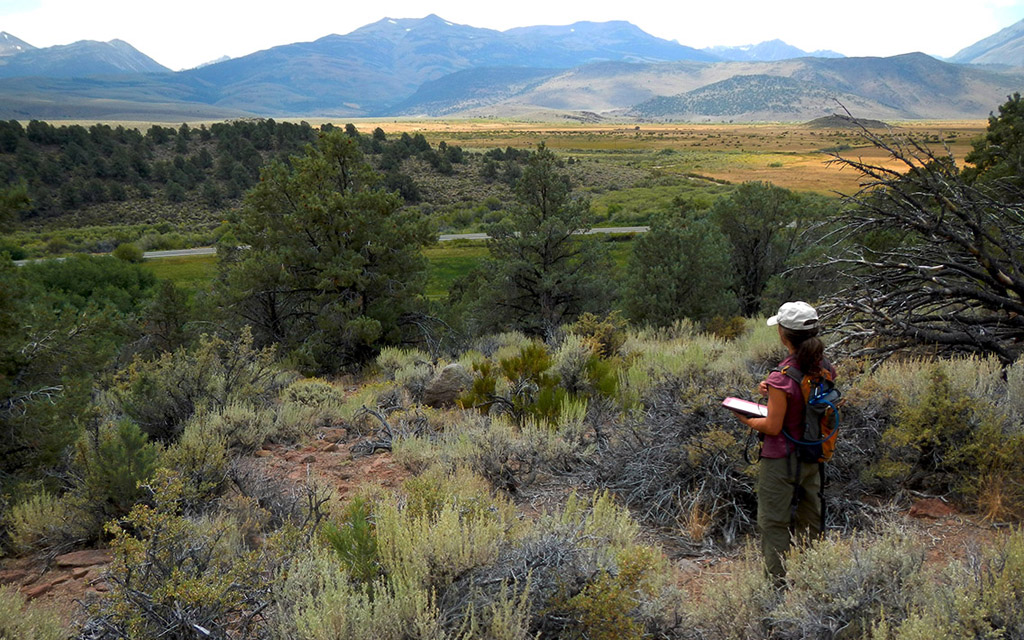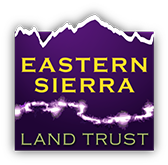 Once a property is conserved, that’s when the real work begins. That’s because permanent conservation means not only protecting land, but keeping it in good condition, too.
Once a property is conserved, that’s when the real work begins. That’s because permanent conservation means not only protecting land, but keeping it in good condition, too.
ESLT’s stewardship team uses both traditional and innovative techniques for evaluating, prioritizing, and caring for each property that ESLT has helped conserve.
Habitat Restoration and Enhancement
On properties owned by ESLT, our stewardship team regularly works with volunteers and local agency partners to improve the overall health of the land. Projects range from essential maintenance like fixing fences and managing invasive weeds, to ambitious long-term restoration work that creates vibrant habitats for native plants and wildlife.
For example, as seen at the top of this page, volunteers have joined us at our Black Lake Preserve and in other locations to help flag barbed-wire fences to make them more visible to sage-grouse and other wildlife.

Are you interested in volunteering with us to help improve habitat for rare wildlife?
At the request of local landowners and with available funding, we also complete restoration projects on privately-owned land. Such projects are customized to the management needs and conservation values of each individual site, the desires of the property owner, and the interests of potential funding partners.
ESLT staff are knowledgeable about potential funding programs for private land enhancement. If you are interested in preserving and enhancing your lands, please contact us. Potential funding partners with which ESLT has experience working include the U.S. Natural Resource Conservation Service (NRCS), California Department of Fish and Wildlife (CDFW), California Department of Forestry & Fire Protection (CalFire), California Deer Association, Partners for Fish and Wildlife, and others.
For an example of a restoration project on privately-owned land, we encourage you to read about Benton Hot Springs Ranch.
For several years, we have partnered with the landowner, CDFW, and CalFire to design and implement a restoration plan at the property’s ponds that aims to improve important habitat for a rare desert fish, the Owens speckled dace.
Annual Monitoring of Protected Lands
Each year, our stewardship team visits every property we’ve helped protect to ensure that the terms of our conservation agreements are being met. This thorough monitoring process also allows us to continue building our relationship with the landowners who have worked with us in the past to conserve their land.

We encourage landowners to join our staff on these monitoring visits, as we can help answer questions about habitat quality, land use, and other issues that may impact their vision for the future of their property.
Typically, monitoring visits occur once each year, but may occur more frequently. ESLT notifies landowners in advance of every monitoring visit; following the visit, we work diligently with them to resolve any compliance issues quickly and efficiently. Our monitoring methods include using a standardized checklist and report, Global Positioning Systems (GPS), repeat digital photography of designated photopoints, as well as Geographic Information Systems (GIS) mapping technologies.


